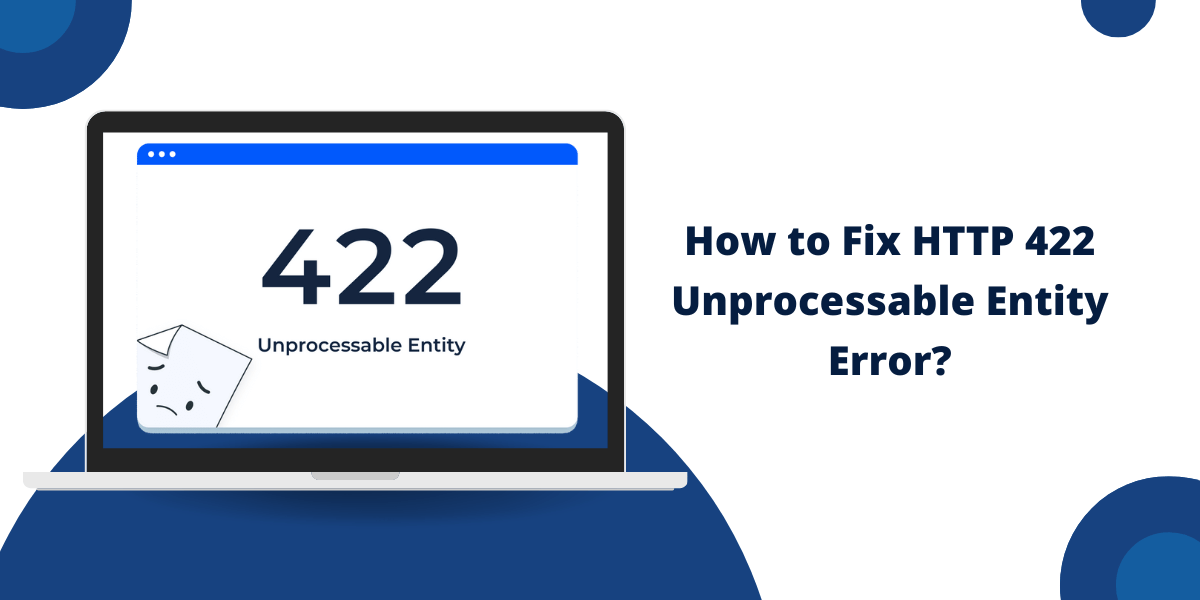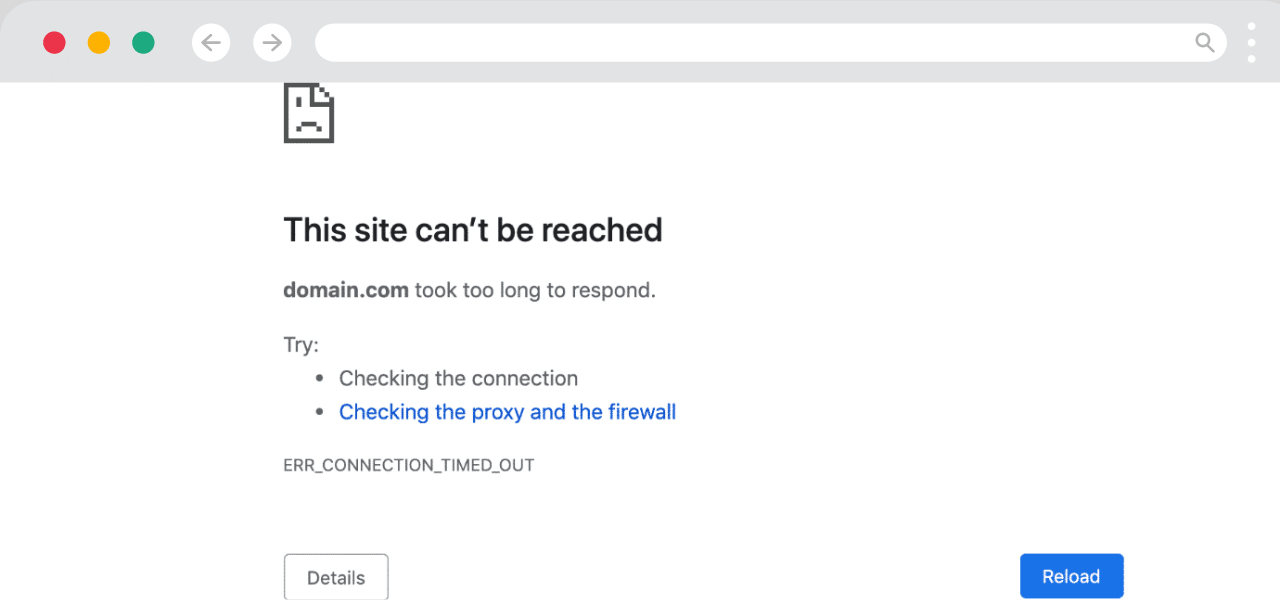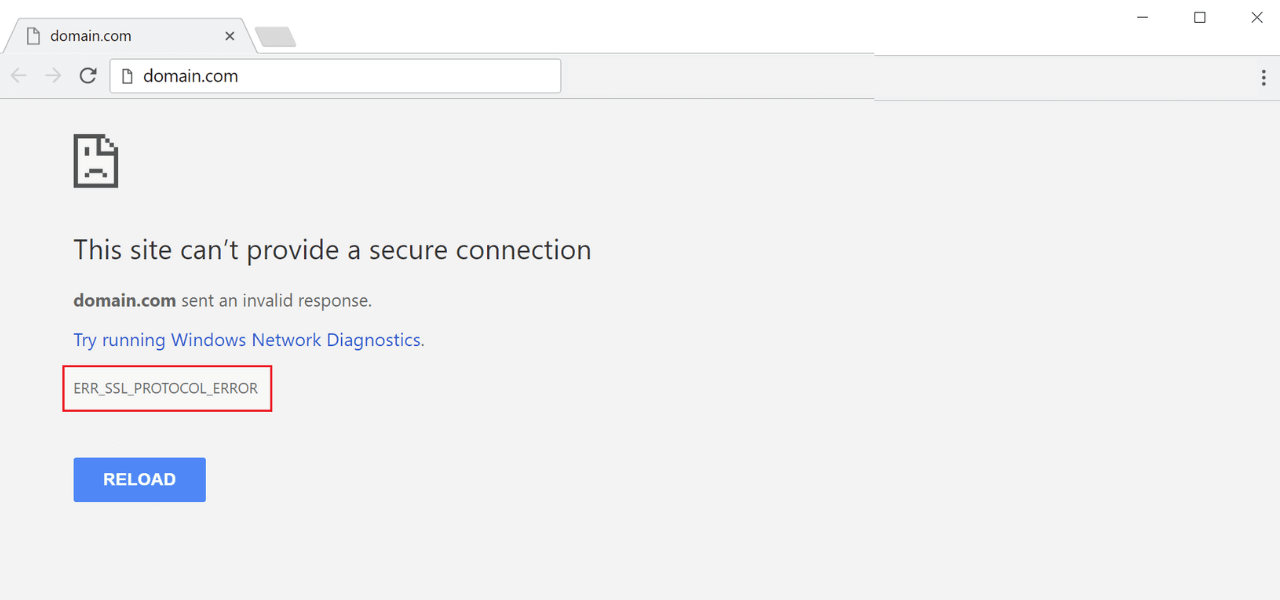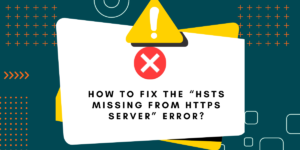What Does HTTP 422 Unprocessable Entity Error Mean?
The HTTP 422 status code, also known as the “Unprocessable Entity” error, is a member of the 4xx family of client-side errors. This specific error code indicates that the server can understand the type of content being sent in the request but is unable to process the contained instructions due to semantic errors.
In other words, the server recognizes the syntax and format of the request, but the actual meaning or instructions within the request are invalid or nonsensical. This is in contrast to a 400 “Bad Request” error, which signifies a more generic issue with the request itself.
The 422 error is primarily associated with the Web Distributed Authoring and Versioning (WebDAV) protocol, which is an extension of HTTP that allows clients to perform remote web content authoring operations. However, it can also occur in more traditional web development and API contexts, where complex requests are being made to the server.
Key Takeaways
- The 422 status code indicates that the server understands the request but is unable to process it due to semantic errors.
- Common causes of the 422 error include invalid form data, incorrect API requests, strict server validation, and faulty server-side code.
- Identifying the root cause of the 422 error is crucial and can be achieved through analyzing server logs, using website monitoring tools, and conducting thorough testing.
- Resolving the 422 error may involve validating user input, adjusting server rules, debugging API calls, and fixing any bugs in the server-side code.
- Proactive monitoring and regular testing are essential to prevent future 422 errors and maintain a smooth user experience.
What are the Causes of the HTTP 422 Unprocessable Error
The HTTP 422 “Unprocessable Entity” error can arise due to a variety of reasons, all of which stem from semantic issues within the request. Let’s explore some of the common causes:
Data Validation Failures
One of the most common triggers for a 422 error is when the data submitted in a form or API request is incomplete, invalid, or does not meet the server’s expectations. For example, if a user submits a form with a missing required field or enters data that does not match the expected format, the server will be unable to process the request and will respond with a 422 error.
Authorization Issues
Problems with user authentication or authorization can also lead to a 422 error. If the server is unable to verify the user’s credentials or determine the user’s access rights, it may reject the request and return a 422 status code.
Data Conflicts
In some cases, the server may encounter a conflict between the data being submitted and the existing data stored on the server. This could happen if the user tries to update a resource with data that contradicts the server’s rules or business logic.
API Request Errors
When working with APIs, a 422 error can occur if the API call includes incorrect parameters, headers, or data in the request body. This could be due to a mismatch between the client’s understanding of the API and the server’s expectations.
Content Negotiation Issues
Content negotiation is the process of determining the best representation of a resource based on the client’s preferences. If the server is unable to find a suitable representation for the client’s request, it may respond with a 422 error.
Framework-Specific Confirmation Errors
Depending on the web framework or platform you’re using, there may be specific rules or validation processes that can trigger a 422 error. For example, in the Laravel framework, a 422 error can occur when form validation fails.
Understanding the root cause of the 422 error is crucial to finding the right solution. By analyzing the specific circumstances surrounding the error, you can identify the underlying issue and implement the appropriate fix.
7 Easy Steps to Fix the HTTP 422 Unprocessable Entity Error
- Check the Input Data and Its Format
- Check Server Settings and Network Connectivity
- Clear Browser Cache and Cookies
- Inspect Server Logs
- Repair Corrupt Database (If Applicable)
- Upload a New Script on the Server
- Contact the Developer or Technical Support
Step #1 Check the Input Data and Its Format
Thoroughly examining the data being submitted in the request is a crucial first step in resolving the 422 error. This involves two key actions:
Validate User Input
Ensure that all user-submitted data is valid and meets the expected format and requirements before it reaches the server. Implement comprehensive client-side and server-side validation mechanisms to catch any issues early in the process.
Some best practices for validating user input include:
- Use HTML5 form validation to catch basic errors on the client side.
- Implement additional JavaScript-based validation to check the user’s input thoroughly.
- Reinforce server-side validation using a framework-specific validation library (e.g., Laravel’s Validator, Django’s Forms, etc.).
- Provide clear and helpful error messages to users when their input is rejected, guiding them on how to correct the issues.
Strengthen Server-side Validation
In addition to validating the user input, you should also review the server’s validation rules to ensure they are appropriately restrictive and correctly defined. Sometimes, legitimate requests can only be accepted if the server’s validation criteria are relaxed.
Take a close look at the server-side code responsible for processing the request and validate the following:
- Are the validation rules clearly defined and aligned with the expected data format?
- Are there any edge cases or exceptional scenarios that are not being properly handled?
- Are the error messages provided to the client informative and helpful?
- Is the validation logic centralized and consistently applied across all relevant requests?
Addressing issues with both client-side and server-side validation can often resolve the root cause of the 422 error related to invalid or unexpected data.
Step #2 Check Server Settings and Network Connectivity
The 422 error can also be caused by problems with the server’s configuration or network environment. Consider the following steps to troubleshoot these potential issues:
Verify Network Stability
Ensure that the server’s network connection is stable and not experiencing any intermittent issues that could interfere with processing requests. Check for any network-related error messages in the server logs and monitor the network traffic to the server.
If you suspect network-related problems, you can try the following:
- Test the server’s connection from multiple locations to rule out local internet connectivity issues.
- Use network diagnostic tools to check for packet loss, high latency, or other network-related problems.
- Consult with your hosting provider or network administrator to investigate any potential network infrastructure issues.
Ensure the Server is Functioning Properly
Please verify that the server itself is functioning correctly and not experiencing any hardware failures, software issues, or resource constraints that could prevent it from properly handling requests.
Look for the following in the server’s logs and monitoring systems:
- Error messages or warnings indicating server-level problems.
- High CPU, memory, or disk usage that could be causing performance issues.
- Any recent changes to server configurations or software updates that may have introduced issues.
If you identify any server-level problems, work with your hosting provider or IT team to address them, such as:
- Scaling up server resources (CPU, RAM, storage) to handle the load.
- Troubleshooting software bugs or compatibility issues.
- Ensuring the server’s operating system and other critical software are up-to-date.
Step #3 Clear Browser Cache and Cookies
Occasionally, a lingering issue in the browser’s cache or cookies can cause the 422 error to occur. Try clearing the browser’s cache and cookies, and then attempt the request again.
This step is particularly important if the 422 error only affects certain users or specific browsers. The cached data or cookies may be interfering with the server’s ability to process the request correctly.
To clear the browser cache and cookies, you can:
- Locate the option to clear browsing data, cache, and cookies in the browser’s settings or preferences.
- Instruct the user experiencing the 422 error to clear their browser data and try the request again.
- Provide step-by-step instructions for the most common browsers (Chrome, Firefox, Safari, Edge) to help users clear their cache and cookies.
By refreshing the browser’s state, you can eliminate any potential interference caused by cached data or cookies, which may resolve the 422 error.
Step #4 Inspect Server Logs
Carefully examining the server’s log files can provide valuable insights into the root cause of the 422 error. Look for any error messages, stack traces, or other relevant information that can help identify the specific issue.
When inspecting the server logs, consider the following:
- Check the timestamp of the 422 error to correlate it with any relevant user actions or system events.
- Look for any error messages or exceptions that may indicate the underlying problem.
- Examine the request and response details to identify any unusual or unexpected data.
- Search for any recurring patterns or similar 422 errors that could point to a common root cause.
If you can’t decipher the log entries on your own, you may need to consult with the application’s developer or the server’s administrator for further assistance.
Step #5 Repair Corrupt Database (If Applicable)
If a database backs the application that’s generating the 422 error, a corrupted or misconfigured database could be the root cause of the issue.
In such cases, you may need to investigate and repair any problems with the database, such as:
- Checking for any database connection errors or issues in the server logs.
- Verifying the database schema and table structures for any inconsistencies or corruption.
- Running database maintenance and repair utilities to fix any underlying issues.
- Restoring the database from a known good backup if necessary.
Depending on the database’s complexity and the application’s architecture, resolving database-related 422 errors may require the expertise of a database administrator or a developer with deep knowledge of the application’s data layer.
Step #6 Upload a New Script on the Server
If you’ve tried the above steps and the 422 error persists, consider uploading a fresh copy of the script or code that’s generating the error. This can help rule out any issues with the deployed code or file.
To do this:
- Based on the information gathered from the server logs or other troubleshooting efforts, identify the specific script or file causing the 422 error.
- Download a clean copy of the script from your source control system or a backup.
- Upload the new script to the server to replace the existing version.
- Clear any browser caches or server-side caches to ensure the new script is being used.
- Retry the request and observe if the 422 error is resolved.
Uploading a new script can eliminate potential issues related to file corruption, deployment errors, or any other problems with the existing code on the server.
Step #7 Contact the Developer or Technical Support
If you’ve exhausted all the troubleshooting steps and are still unable to resolve the 422 error, you should seek assistance from the application’s developer or the technical support team.
When contacting the developer or support team, be sure to provide them with as much information as possible, including:
- The specific URL or request that’s generating the 422 error.
- Any relevant error messages or stack traces from the server logs.
- Steps you’ve already taken to try and resolve the issue.
- Any other contextual information that may be helpful, such as recent changes to the application or server environment.
The developer or support team can provide more targeted guidance or assistance based on their understanding of the application’s architecture and any known issues. They can also identify any underlying problems or edge cases that you may have overlooked during your troubleshooting efforts.
What are the Troubleshooting Techniques?
To effectively identify and resolve HTTP 422 errors, it’s important to have a well-rounded approach to troubleshooting. Here are some key techniques to consider:
Analyzing Server Logs
Dive deep into the server’s log files to uncover any clues or error messages that can point you toward the root cause of the 422 error. Look for patterns, error codes, and any other relevant information that can help you pinpoint the issue.
Leveraging Website Monitoring Tools
Utilize website monitoring tools, such as Google Search Console or SEO auditing platforms, to proactively detect and track any 422 errors that may be occurring on your website. These tools can provide valuable insights and alerts to help you stay on top of any issues.
Conducting Comprehensive Testing
Implement a robust testing strategy to identify and address potential 422 errors before they impact your live environment. This may include unit tests, integration tests, and end-to-end testing to validate the integrity of your application’s request handling and server-side logic.
How to Prevent HTTP 422 Errors in Future?
Addressing the HTTP 422 error is important, but it’s equally crucial to take steps to prevent these issues from occurring in the future. Here are some key strategies to consider:
Regularly Monitor for 422 Errors
Continuously monitor your website or application for any 422 errors using the tools and techniques mentioned earlier. This will allow you to quickly identify and resolve any issues before they impact your users or your website’s SEO performance.
Implement Comprehensive Testing Procedures
Develop a comprehensive testing suite that includes both automated and manual tests to ensure that your application’s request handling and validation processes are functioning as expected. This will help you catch and address any potential 422 errors early in the development lifecycle.
Stay Up-to-Date with API and Framework Requirements
If your application relies on third-party APIs or web frameworks, make sure to stay informed about any updates or changes to their requirements. This will help you proactively address any potential issues that may arise due to compatibility or integration problems.
Final Thoughts
The HTTP 422 “Unprocessable Entity” error can be frustrating and challenging to resolve, but with the right approach, you can effectively identify and fix the underlying problems. By understanding the common causes of the 422 error, following the troubleshooting steps outlined in this guide, and implementing proactive monitoring and testing strategies, you can ensure a smooth user experience for your website or application.
Remember, addressing 422 errors is not just about fixing a technical problem—it’s about maintaining the overall health and performance of your online presence. This can significantly impact your website’s search engine visibility and user satisfaction. So, take the time to master the 422 error and watch your website thrive.
Frequently Asked Questions (FAQ)
What is the HTTP 422 status code?
The HTTP 422 status code, also known as the “Unprocessable Entity” error, is a client-side error that indicates the server can understand the type of content being sent in the request but is unable to process the contained instructions due to semantic errors.
What causes the HTTP 422 error?
Common causes of the HTTP 422 error include:
- Data validation failures
- Authorization issues
- Data conflicts
- API request errors
- Content negotiation issues
- Framework-specific confirmation errors
What is the difference between a 400 and 422 HTTP status code?
A 400 “Bad Request” status code indicates a generic issue with the request itself. In comparison, a 422 “Unprocessable Entity” status code specifically means the server can understand the request but is unable to process it due to semantic errors.
How do I detect 422 HTTP status code issues?
You can detect 422 HTTP status code issues using website monitoring tools, SEO auditing platforms, and by regularly analyzing server logs. Tools like SiteChecker Pro’s HTTP Status Code Checker can help identify and report any 422 errors found on your website.
What causes 422 errors in Laravel?
In the Laravel framework, a 422 “Unprocessable Entity” error typically occurs when form validation fails. This means the server understands the content type of the request entity and the syntax is correct, but it was unable to process the contained instructions due to invalid or missing data.

Priya Mervana
 Verified Web Security Experts
Verified Web Security Experts
Priya Mervana is working at SSLInsights.com as a web security expert with over 10 years of experience writing about encryption, SSL certificates, and online privacy. She aims to make complex security topics easily understandable for everyday internet users.



